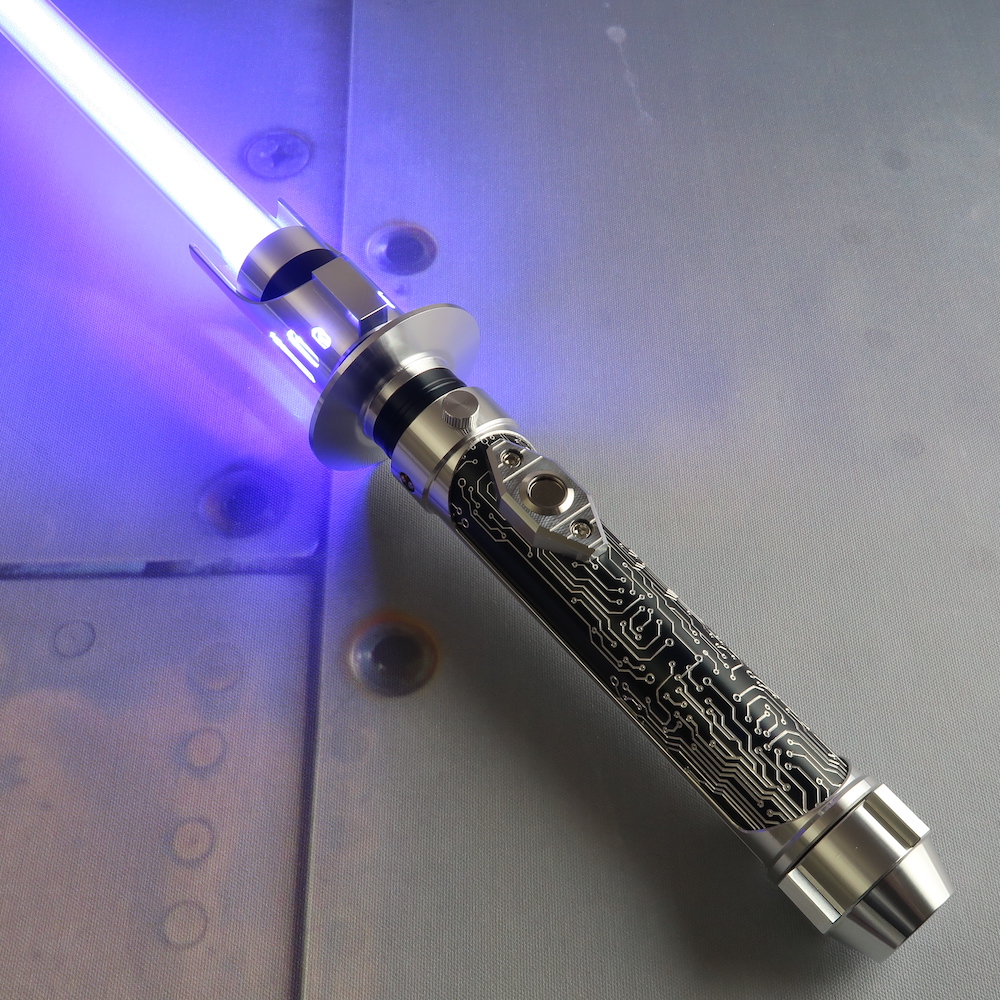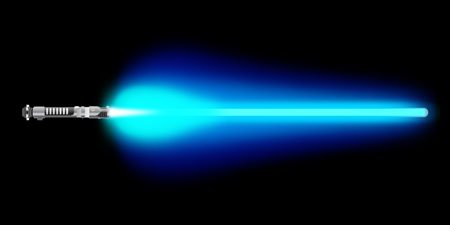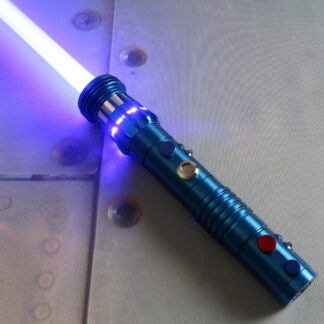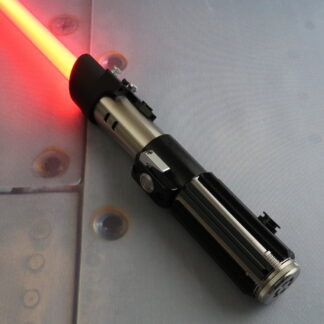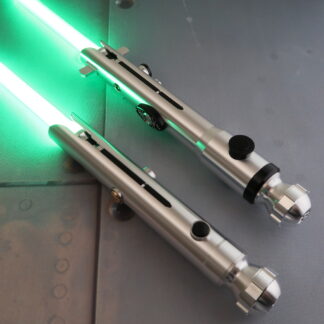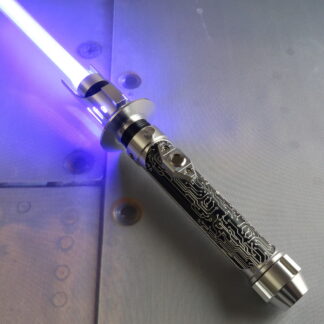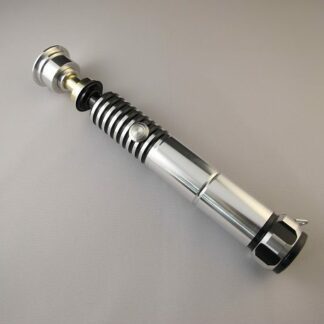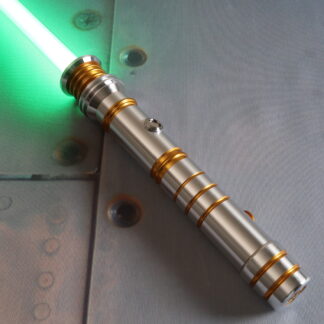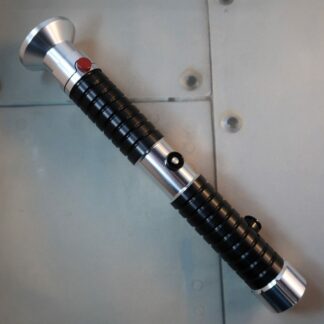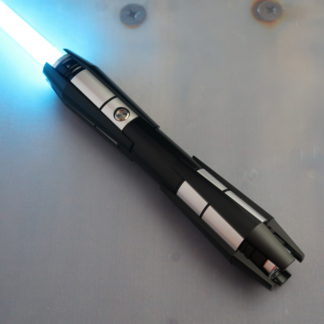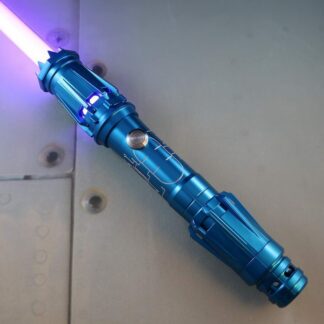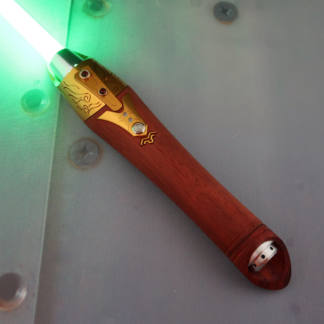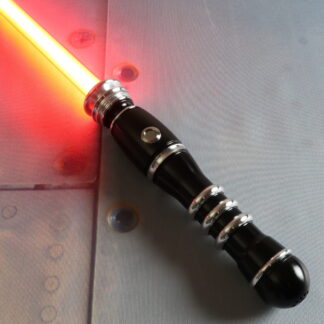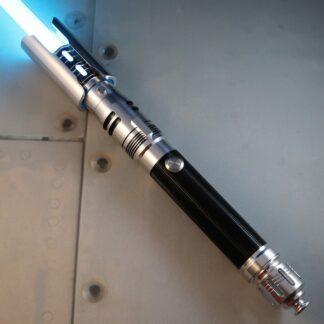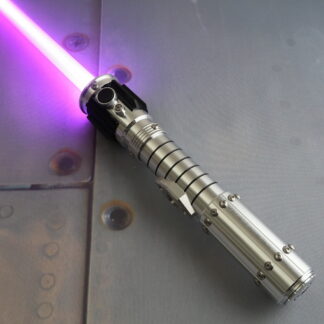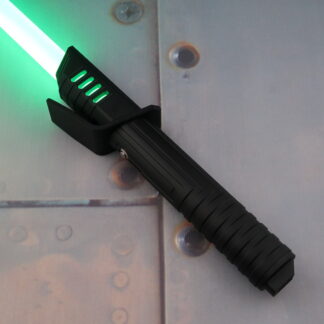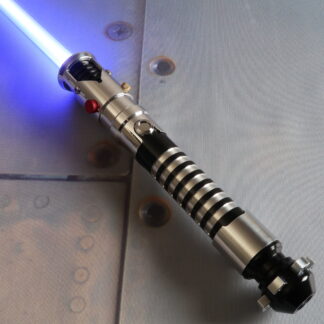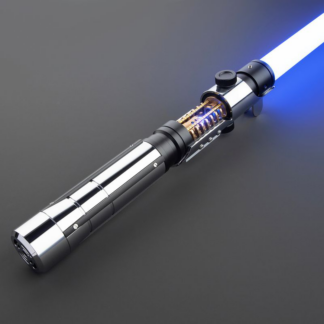A Deeper Look at Lightsaber Form V: Shien & Djem So Combat Style
The development of the first four lightsaber combat forms (Shii-Cho, Makashi, Soresu, and Ataru) is a logical progression where each subsequent style attempts to compensate for perceived limitations in the previous one. Form V (5): Shien and Djem So mark the point where that step-by-step evolution shifts course.
Lightsaber form V was not devised as a response to Form IV: Ataru; rather, it is essentially another attempt to address the shortcomings of the highly defense-oriented Form III: Soresu. While Ataru complements Soresu by emphasizing offense in much the same way that the earlier form stresses defense, Form V opts for a middle-ground approach that relies on strategic counterattacks to gain the advantage in lightsaber duels.
The Star Wars Shien and Djem So lightsaber form is also unusual in that it is divided into two distinct yet related variants. Both Shien and Djem So share a common theoretical foundation that must be understood before their differences can be comprehended. The Djem So stance, in particular, is known for channeling raw power into aggressive counterattacks—a contrast to the blaster-focused techniques of Shien. Like many aspects of the Jedi Code and training, mastery of Form V begins with philosophy, but it’s the application that truly defines the Shien/Djem So fighting style.
Master The Shien & Djem So Lightsaber Form With a Custom Saber
The Basics of Form V Shien and Djem So
The practitioner of Form V draws heavily upon the blocks, parries, and other defensive maneuvers favored by Form III. However, where the Soresu expert waits for a chance to strike back, the Form V wielder actively attempts to create an opportunity, using a variety of tactics to put their opponent into a vulnerable position.
Shien and Djem So’s lightsaber form is fundamentally a counterattacking form. This means that the Form V expert must be able to shift artfully from defense to offense, and back again, in the blink of an eye. As it requires both speed and strength, Form V places enormous physical demands on the lightsaber wielder who uses it. However, practitioners often call upon the Force to augment their abilities.
Form V lacks the acrobatic virtuosity associated with Ataru; its users remain relatively stationary during battle. In lightsaber combat, a well-executed Shien stance provides the positioning needed to deflect blaster fire or redirect energy back at attackers. Meanwhile, the Djem So opening stance typically involves a strong, grounded posture, which aids in launching powerful counterattacks against saber-wielding foes.
According to Legends, Form V is also known as Way of the Krayt Dragon, or the Perseverance Form. This powerful lightsaber style has been favored by some of the galaxy’s most iconic Force users, including Ahsoka Tano, Adi Gallia, and Anakin Skywalker, a topic we’ll explore in more depth later in this guide.
Lightsabers To Use With Shien and Djem So
Differences Between Shien and Djem So
The Shien lightsaber form was the first of the two Form V variants to be developed. It was devised as an anti-blaster form, providing the practitioner with an array of advanced saber styles and tactics to defend against multiple opponents wielding ranged energy weapons, such as blasters.
Shien is not just about blocking blaster fire, however. Its techniques, when properly applied, allow the user to deflect these bolts right back at their assailant, which is probably the most vivid example of the power of Form V to transition from defense to offense. (Precisely redirecting blaster bolts in this manner is also possible with Soresu, although that form does not emphasize it, and it seldom occurs in practice.) In addition, the Shien dueler can resort to a variety of lightsaber strikes and form-specific maneuvers.
Many Shien stance experts favor an open, angled posture and prefer to utilize a reverse grip (where the thumb and index finger are the parts of the hand nearest to the lightsaber pommel). However, this grip is not a mandatory aspect of Form 5/V lightsaber combat.
The Djem So stance and fighting style form, created after Shien, was intended primarily for melee battles against lightsaber-wielding adversaries. Unlike Shien, the Djem So stance emphasizes firm footing and upper-body strength to deliver powerful overhead and diagonal strikes. It is geared more toward head-to-head duels and emphasizes the use of powerful, decisive lightsaber attacks to overwhelm the opponent whenever possible. Lightsaber Form V fighters rely on strength much more than agility.
The master of Form V has ready access to a wide range of attacking and defending saber techniques that combine into an extremely effective battlefield repertoire.
Lightsabers Great For Shien & Djem So
Strengths & Saber Pairings of Form V
Lightsaber Form 5/V thrives on controlled aggression and counterattack precision. Both Shien and Djem So are based on active defense, where a well-timed block can become the launching point for an immediate and overwhelming strike.
Whether deflecting a blade or a blaster bolt, Form V turns an enemy’s offense into a vulnerability. Shien users excel in reflecting blaster fire toward opponents, offering crowd-control advantages over more elegant forms like Makashi or the balanced Form VI: Niman.
Djem So practitioners emphasize raw power and momentum, using heavy overhead strikes and forceful, two-handed blows to break through even the most resolute defenses, particularly effective against defensive stylists like Soresu users or agile Ataru duelists.
Form V wielders typically favor medium- to heavy-weight single-bladed hilts to maximize leverage and impact. Shien users, notably Ahsoka Tano, sometimes wield reverse-grip sabers to enhance speed and angular counterattacks. Because Ahsoka’s lightsaber form is a reverse-grip variation of Shien, you may notice emphasized precision, agility, and fluid deflection when you watch her moves during a duel.
Finally, unlike acrobatic forms that rely solely on speed, Form V channels endurance and strength through the Force to maintain pressure over time.
Shien & Djem So Weaknesses
Despite its strengths, both Shien and Djem So have clear drawbacks. When using Form V in lightsaber combat, the reliance on powerful counterattacks quickly drains energy, especially when compared to the efficiency of Form III or the steady pacing of Form VI. The rhythm of block-and-riposte moves (as used in fencing) can become predictable, allowing duelists of other forms to exploit its overcommitted strikes.
Mobility is also limited in Shien vs Djem So stances. Djem So’s opening stance involves rooted foot placement that reduces agility. Its wide swings can also backfire in tight spaces, leaving the wielder susceptible. The Shien opening stance, while more fluid, also limits mobility by focusing on angular positioning rather than evasive movement to reflect blaster fire.
Success with Form V depends on precise timing—misjudging an angle risks leaving the duelist open or redirecting fire in the wrong direction. Understanding these limitations helps users know when to adapt, such as by switching to defensive Soresu or fast-moving Ataru.
Shien & Djem So Lightsaber Form Legacy & Famous Users
Lightsaber Form V earned its galactic reputation through strength, stamina, and relentless counterattacks. Jedi and Sith alike have relied on Shien’s blaster deflections or Djem So’s overpowering strikes to claim victory in high-stakes battles:
- Anakin Skywalker / Darth Vader: Anakin Skywalker mastered Djem So’s powerful counters to overwhelm foes, as seen in his legendary duel with Count Dooku. As Darth Vader, wielding his infamous red lightsaber, he retained the form’s core principles, further amplified by the Dark Side.
- Ahsoka Tano: As mentioned earlier, Ahsoka Tano’s lightsaber form adapted Shien into a reverse-grip variation paired with Jar’Kai maneuvers using dual sabers for combat, unlike any others. Ahsoka’s agile style enabled nearly effortless redirection of blaster fire while maintaining fluid movement on the battlefield.
- Luke Skywalker: In both legends and canon, Luke Skywalker utilized Djem So’s broad, forceful swings in Star Wars: Episode V – The Empire Strikes Back. Over time, he evolved this raw power into a more restrained and balanced technique.
- Satele Shan: The Old Republic era’s Satele Shan balanced Shien’s redirection tactics with Force-assisted leaps and strikes. Satele Shan’s lightsaber form is widely recognized as a prime example of Form V’s adaptability, showcasing how the style endured and evolved across generations of Force users.
- Adi Gallia: Jedi Master Adi Gallia, often wielding a blue-bladed saber, combined Shien with telekinetic bursts to break enemy lines. On the planet Boz Pity, Gallia’s precision and counter-offensive strategy were key to confronting multiple droids at once.
Form V bridges the gap between pure defense and explosive offense. Compared to the elegance of Form II or the patience of Form III, Shien and Djem So offer bold Force wielders the tools to stand their ground—and push forward with power. Explore our character-inspired sabers or customize your own to master Form V on your terms.
Character-Inspired Custom Sabers
Create Your Own Saber & Join The Community
What does your lightsaber combat form say about you? Once you’ve determined your preferred form(s), explore lightsaber colors, character-inspired lightsabers, or build your very own custom saber from scratch to tackle the moves you must master.
You can also find your people and discuss everything Star Wars at Ultrasabers’ official online forum at SaberForum.com. As always, don’t hesitate to contact Ultrasabers with any questions about any of our saber options, whether you’re looking to build a double-bladed saber, crossguard lightsaber, or Neopixel saber. Not to mention all the embellishments and accessories that go into making your dream weapon!


